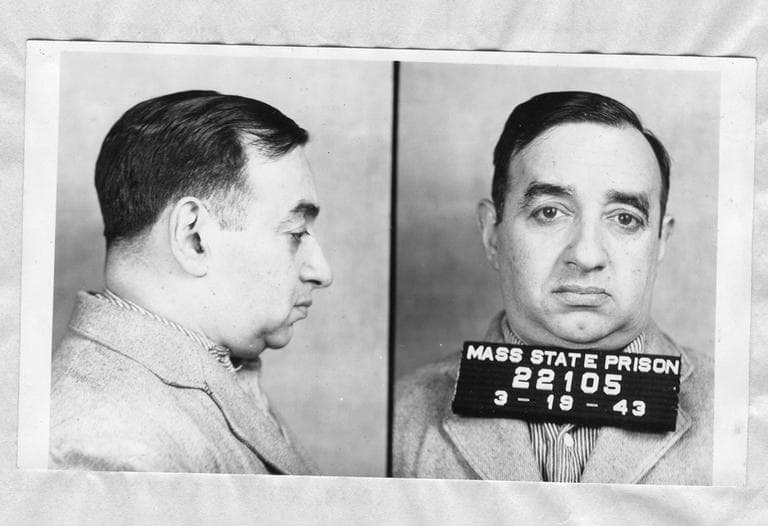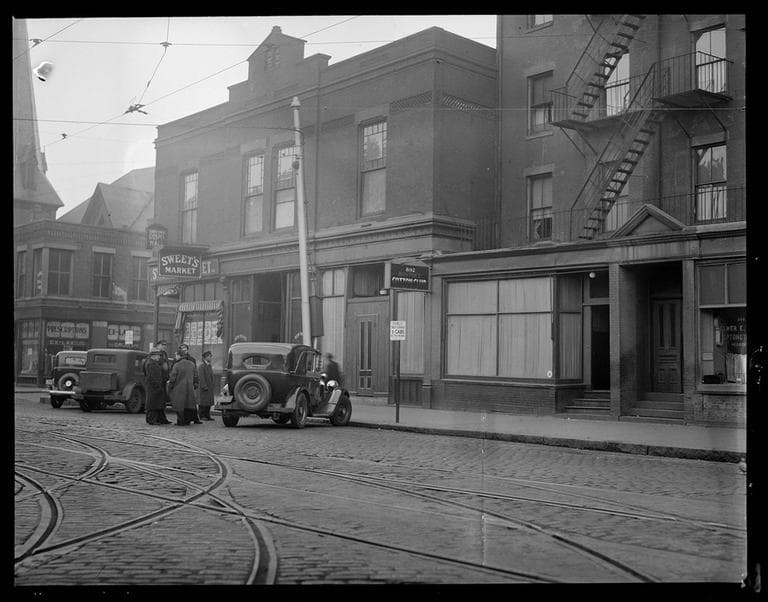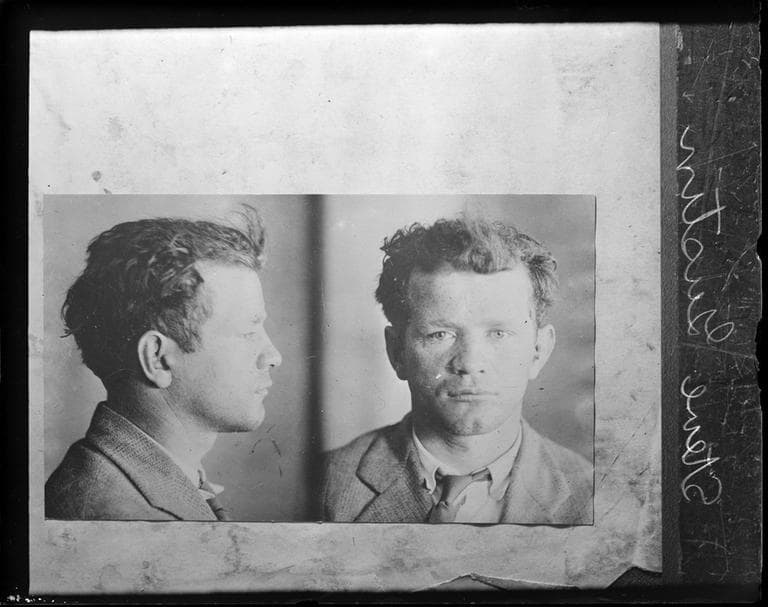Advertisement
With 'Whitey' On Trial, A Look At Boston's Gangster Past
James "Whitey" Bulger's long-awaited trial has the city fixated on the mobsterism of the 1970s and 1980s. But Boston's history of organized crime goes back much further.

Among the most colorful characters of the Hub underworld: Charles "King" Solomon, the Prohibition-era bootlegger who met a grisly end in a city nightclub; Harry "Doc" Sagansky, the dentist-turned-bookmaker; and Alexander Petricone, a Winter Hill gangster who went Hollywood long before "Whitey."
Emily Sweeney, a Boston Globe reporter, pulled together old mugshots and newspaper clippings for her paperback "Boston Organized Crime," published last year. And WBUR caught up with her for a telephone interview earlier this week.
The interview is edited and condensed.
DS: Where did it all start? How far back does Boston gangsterism go?
Emily Sweeney: Organized crime has been around for as long as people have been around. Doing the research for my book, I started in the Prohibition era — 1920s and '30s were a prime time for organized crime, just because of the laws prohibiting liquor. So a lot of bootlegging and whatnot went on in Boston and cities across the country. Back then, you had folks like the Gustin Gang of South Boston, making and moving booze.
Tell me about Charles "King" Solomon and how he met his end.

He is quite an interesting character. He is definitely a successful businessman. He owned theaters and nightclubs in Boston. And he was indicted on bootlegging charges. The feds put him in the middle of this huge rum ring. They believed that he was responsible for moving tons of booze — him and other folks — in New York and New Jersey; that they were responsible for smuggling tons of rum to this area; and that they were using the crazy new technology of the time — radio technology — to smuggle liquor. At the time of the indictment, Solomon was gunned down in the Cotton Club on Tremont Street in Roxbury. His murder is still unsolved.
"Whitey," who inspired the Jack Nicholson character in "The Departed," isn't the first Boston gangster to make an impact in Hollywood. Tell me about Alexander Petricone.
Really interesting story. As the so-called gangster wars were picking up [in the 1960s], he headed to the West Coast and made a big name for himself in movies and even appeared in "The Godfather." He [played Las Vegas casino owner] Moe Greene, [the top Jewish gangster in the country]. He had one of the best lines in the movie: "Do you know who I am? I'm Moe Greene!"
Any favorites characters? Who were the people who most came alive when you were researching the book?
I'd say "Doc" Sagansky. He ran an impressive gambling business. I was amazed. He was one of the oldest people to go to federal prison. He was in his 90s when he was behind bars because he refused to cooperate with authorities.
Some of the early guys that ran with the Gustin Gang — the Wallace brothers. One of the Wallace brothers — Stevie Wallace, his brother Frankie got gunned down in the North End by a rival gang in 1931. Steve Wallace — I've tried to research more about his life because, before he got involved in a life of crime, he was a featherweight boxer. He even made it to the Olympics [it appears] and traveled by ship to Antwerp for the 1920 Olympics.

Did he actually box in the Olympics?
It looks like he was an alternate. The Olympic records from that year are few and far between, but from what I can tell he went and he was an alternate.
Is this gangster story a story of an old Boston, a Boston past, or does it say something about the Boston we live in now?
Like I said, organized crime has always been around. So organized crime is still going on. But the story of "Whitey" and the South Boston that he grew up in and he operated in is a much different place than South Boston now. A lot of the old bars are gone and now you see fewer families living there, it's more younger people — the old story of gentrification. It's definitely a different neighborhood. I would say the same for Somerville, too — [Bulger's old stomping grounds in] the Winter Hill area.
In the course of researching this book, did gangsterism retain is romance for you?
I've always been fascinated by it. And I've almost been fascinated that people are so fascinated with gangsters and the underworld. But the whole time I was researching the book, I always felt for the victims. There were victims. Some of the people in my book were victims themselves.
This program aired on June 5, 2013. The audio for this program is not available.